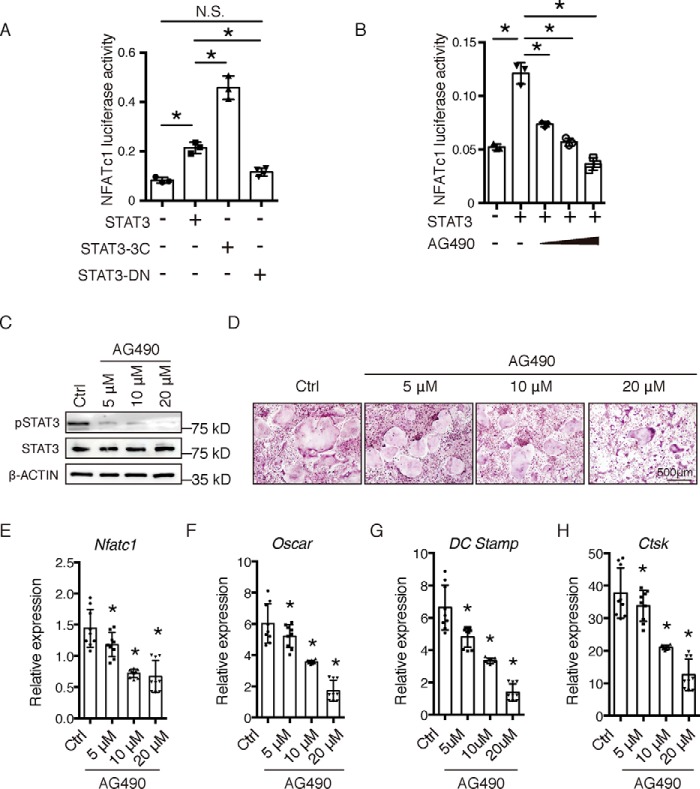Figure 7.
STAT3 might act as a pharmacological target in osteoclasts. A, 293T cells were transfected with STAT3 WT (STAT3), or variants (STAT-3C or STAT3-DN), together with NFATc1-Luc. Three independent cell isolations were collected and tested. Error bars represent mean ± S.D.; *, p < 0.05; N.S., not significant. B, 293T cells were transfected with STAT3, together with NFATc1-Luc, and then treated with increased amounts of STAT3 inhibitor AG490. Three independent cell isolations were collected and tested. Error bars represent mean ± S.D.; *, p < 0.05. C, Western blotting assay of BMMs from 4-week-old WT mice cultured with M-CSF and RANKL in the absence or presence of different concentrations of AG490 for 1 h. D, TRAP staining of BMMs cultured with M-CSF and RANKL in the absence or presence of different concentrations of AG490 until mature multinuclear osteoclasts formed (5–7 days). E–H, NFATc1 and osteoclast-specific gene expression of BMMs cultured with M-CSF and RANKL in the absence or presence of different concentrations of AG490 until mature multinuclear osteoclasts formed (5–7 days). Three independent cell isolations were collected and were tested three times. Experiments were repeated more than three times independently. Error bars represent mean ± S.D.; *, p < 0.05.

